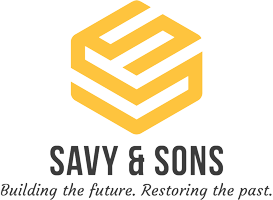
Restoration projects are a testament to the transformation of the old into the new. The traditional methods of restoring surfaces often come with their fair share of challenges, however – particularly with regard to dust and environmental concerns. In this exploration, we will delve into the revolutionary world of dustless media blasting and its transformative impact on restoration endeavors.
The Birth of Media Blasting
A surface preparation technique that employs the forceful projection of abrasive materials onto surfaces, media blasting has been a mainstay in the restoration industry for decades.
Historically, sandblasting (which uses silica sand as the abrasive medium) was the go-to method for cleaning and restoring surfaces. But while effective, it came with significant drawbacks, the most prominent being the generation of hazardous dust.
The Dust Dilemma
Dust is an inherent byproduct of traditional sandblasting. And not only does it pose health risks to workers and the environment, but it can also lead to contamination and additional cleanup efforts, wreaking havoc on timelines and driving project costs up. Moreover, stricter environmental regulations have made the disposal of hazardous blasting materials a logistical challenge.
To address these challenges, the restoration industry turned to innovation, leading to the development of dustless media blasting technologies.
The Advantages of Dustless Media Blasting
Dustless media blasting involves the use of specially designed equipment that combines water with the abrasive blasting material. This mixture is then propelled onto the surface to be restored, with the water suppressing dust and preventing it from becoming airborne, while the abrasive material efficiently removes coatings, corrosion, and contaminants.
The advantages are numerous.
Efficiency: The technology is highly efficient, often reducing the need for secondary cleanup and minimizing project timelines.
Environmental Friendliness: Dustless media blasting significantly reduces airborne dust, making it a more environmentally responsible choice, as the wastewater generated during the process can be treated and disposed of safely.
Health and Safety: The elimination of hazardous dust protects the health of workers and bystanders, reducing the risk of respiratory issues and other health problems.
Precision and Control: Dustless media blasting also allows for precise control of the blasting process, making it suitable for delicate or intricate surfaces.
Versatility: The addition of water to the process also means a wider variety of abrasive materials can be used. Crushed glass, garnet, and baking soda are just a few examples of the newer abrasives which, in turn, have their own unique advantages and applications.
Applications of Dustless Media Blasting
The widening variety of abrasives has also, in turn, benefited the practice general. This is because each material has unique strengths which are better for certain applications, like…
- Historical Building Restoration: Delicate architectural details can be preserved with precision.
- Automotive Restoration: Paint and rust removal without damaging the vehicle’s underlying structure.
- Marine Restoration: Effective cleaning of boat hulls and marine structures.
- Industrial Equipment Refurbishment: Preparing surfaces for re-coating and maintenance.
- Bridge and Infrastructure Restoration: Removing old coatings and corrosion from vital infrastructure.
Consider a historic landmark with intricate stone carvings that require restoration after ages of weathering and build-up.
Traditional sandblasting would have been a challenge due to the risk of damaging the delicate details, as well as the environmental impact of dust. In this case, using a gentle abrasive material would allow for precise restoration, preserving the landmark’s intricate beauty.
A Clean Slate for Restoration
Dustless media blasting represents a revolution in the restoration industry. The technology addresses longstanding challenges associated with dust generation and environmental impact, making restoration projects cleaner, safer, and more efficient. As the restoration industry continues to embrace innovation, dustless media blasting stands as a testament to the transformative power of technology in preserving the past and shaping the future.














